The first time I learned about Ijen was in the movie Samsara (the sequel to Baraka). At that time it was just an exotic location some place far away. In a hostel in Jakarta I saw a clip from the BBC documentary “Human Planet”, which featured similar footage from Ijen. It put Ijen on the map for me, but still we had no concrete plans visiting it. Nor we had any idea it was possible to visit it. On the way to Bromo, we made a stopover at a tourist agency, where a cunning businessman told us about Ijen and happily sold a package tour to Bali via Ijen. Even though it seems we paid a little too much for the deal in the vulnerable mental state after an exhausting 10 hour journey, Ijen was totally worth it and in fact it was the highlight of Java for me. As with other volcanoes the best time to visit Ijen is during the dry season (from May to October). Although we couldn’t enjoy the views over Ijen due heavy impenetrable clouds, a trip down the crater fully compensated it.
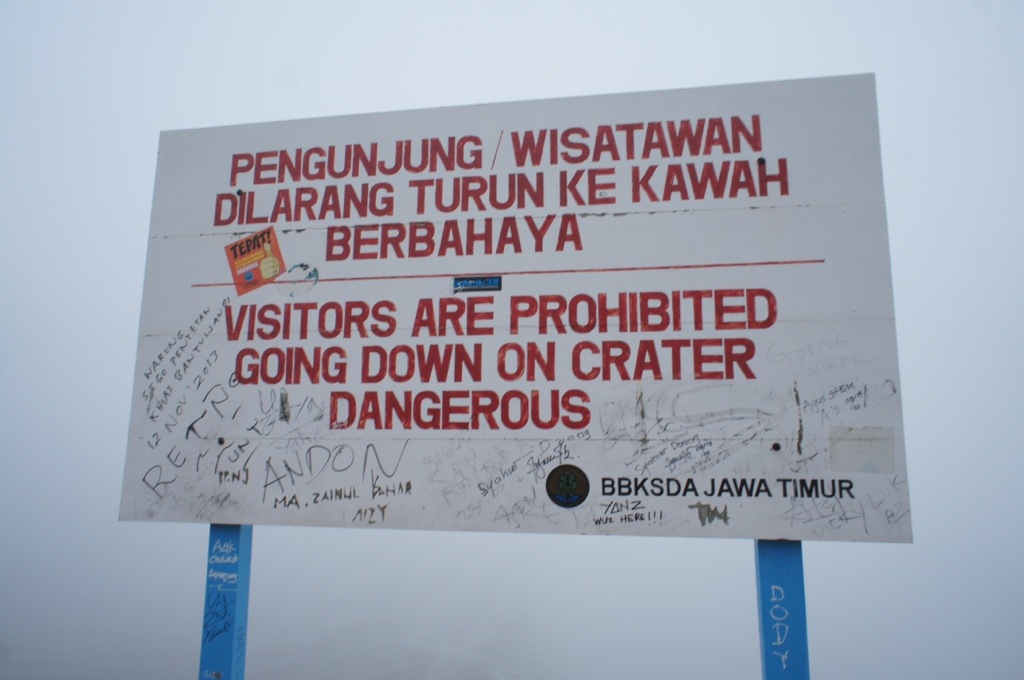
Despite the warning most of the tourists descend down the crater and guides readily offer their help
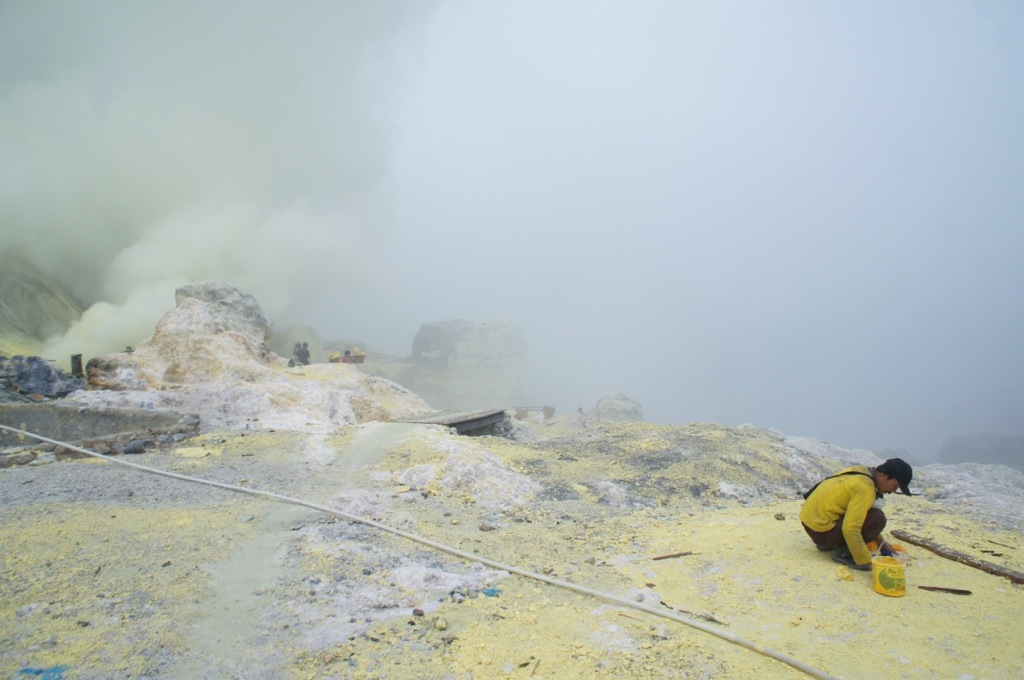
Most workers do not wear proper respiratory protection. Some workers wear flip-flops in this quite demanding terrain
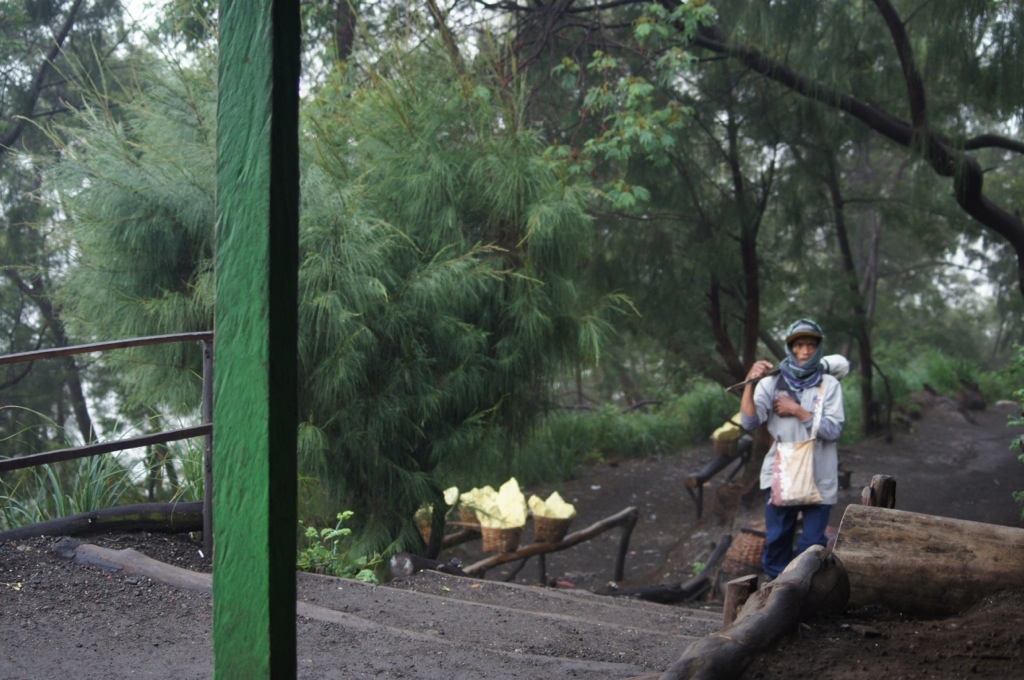
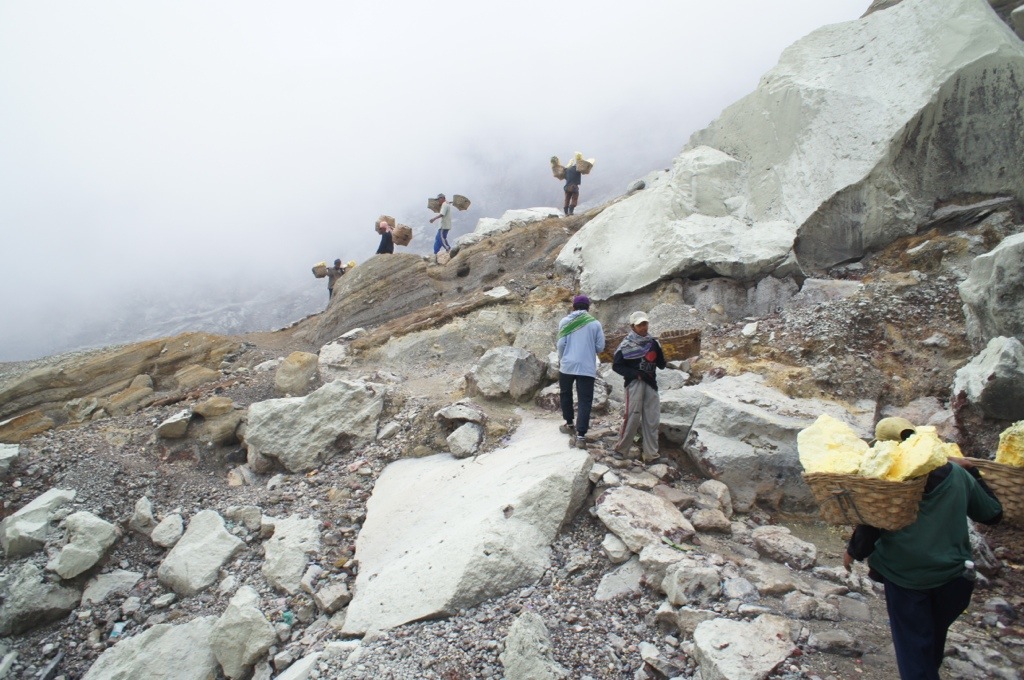
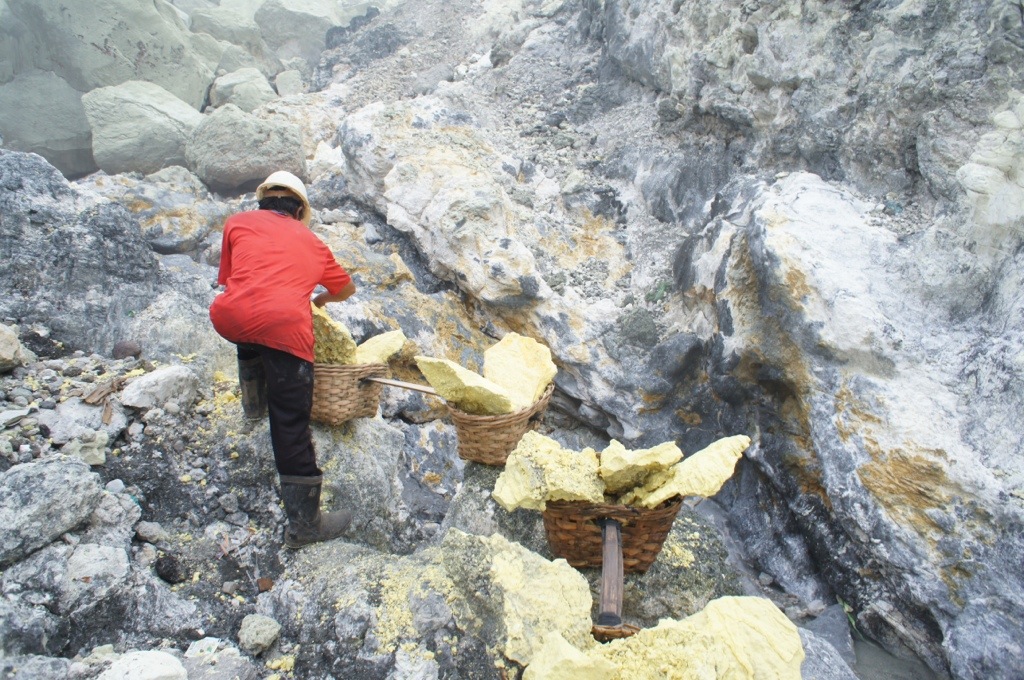
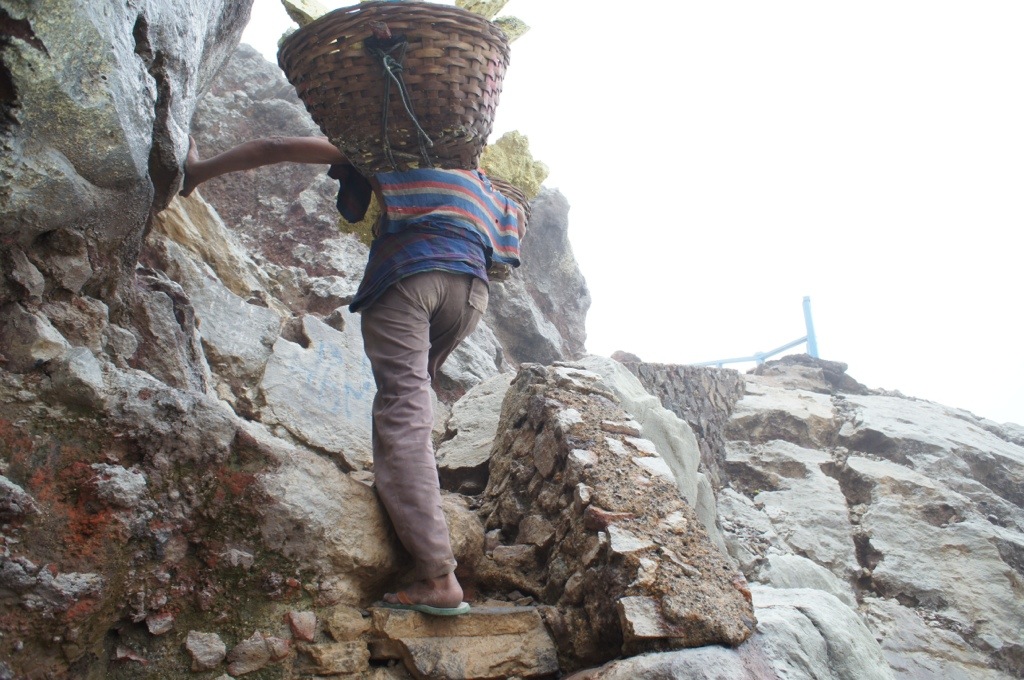
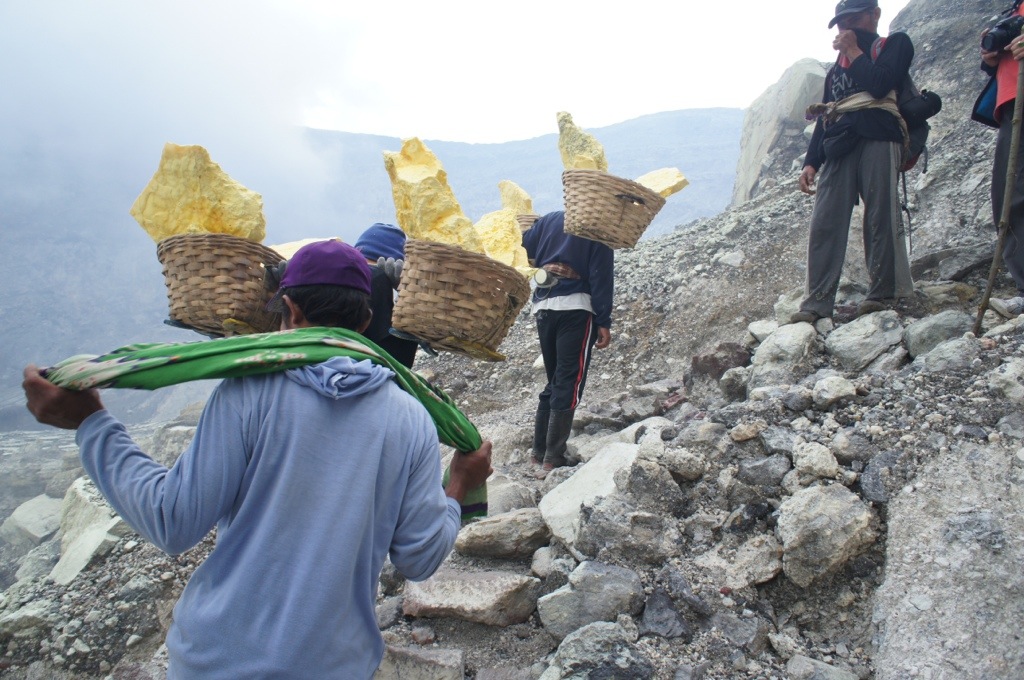
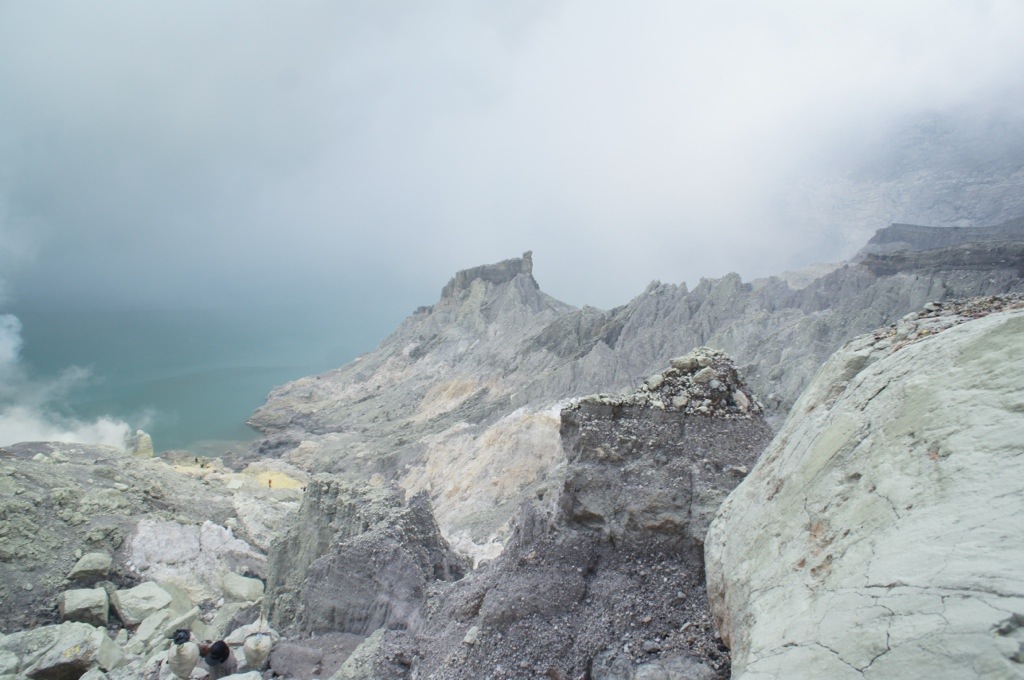
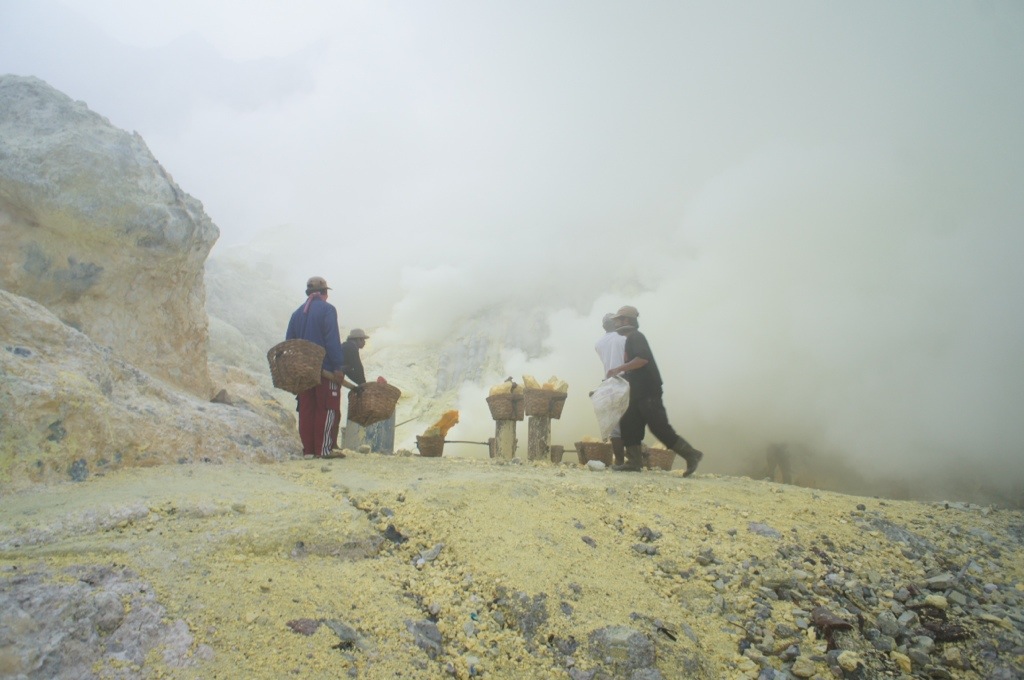
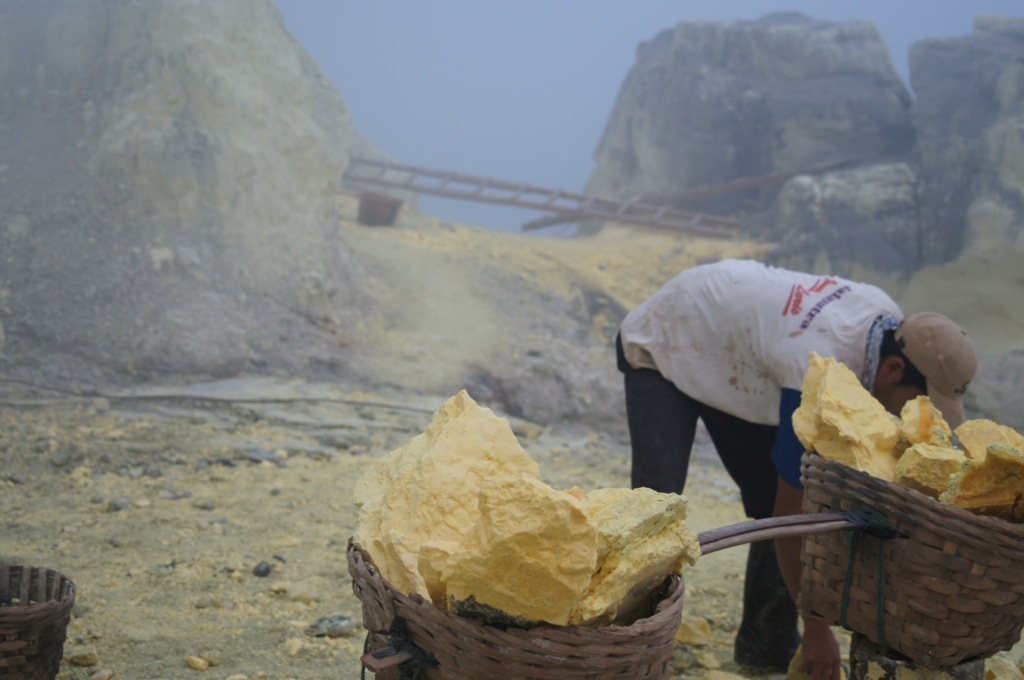
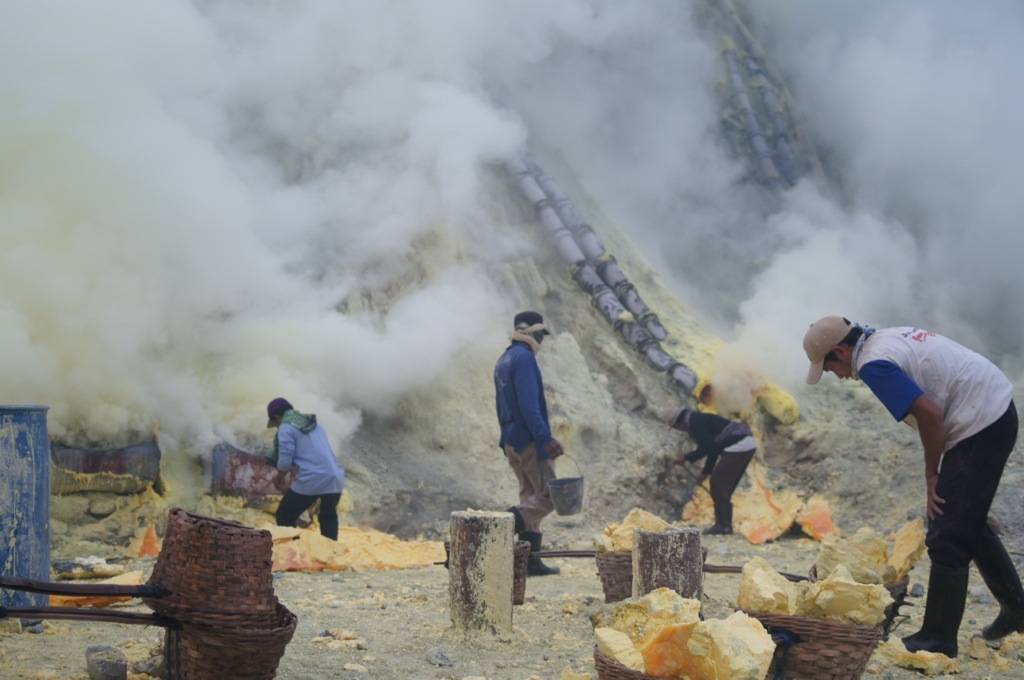
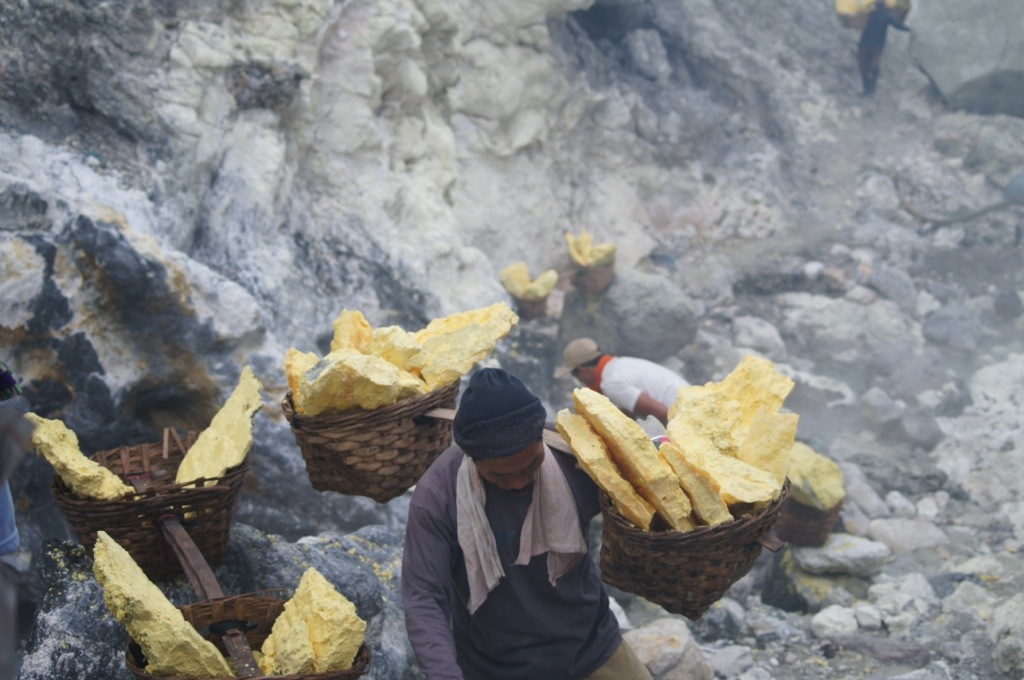
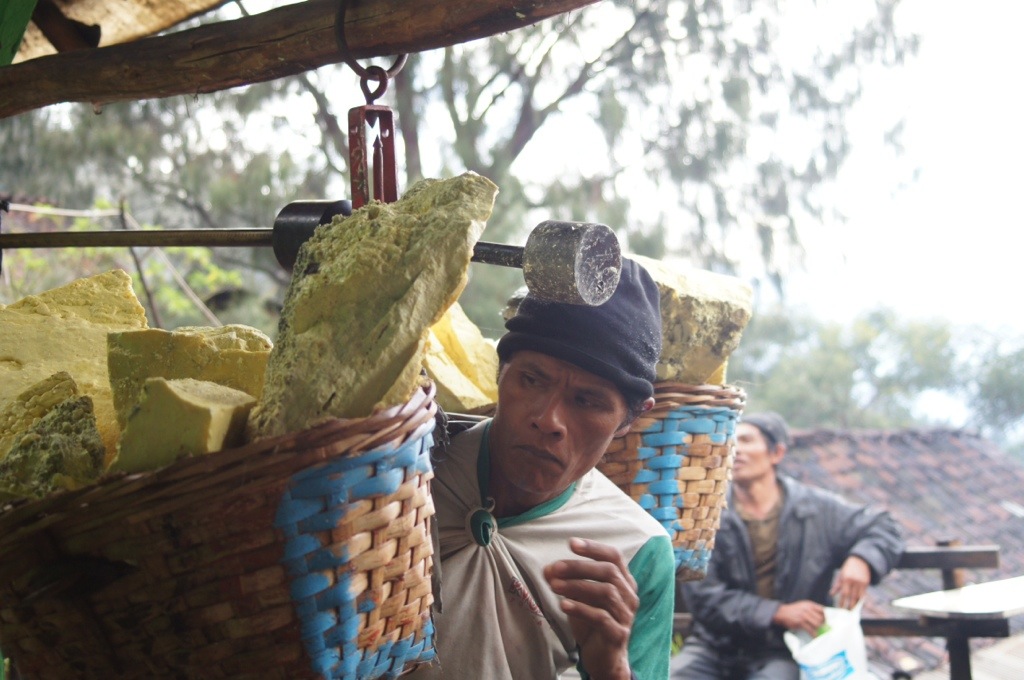
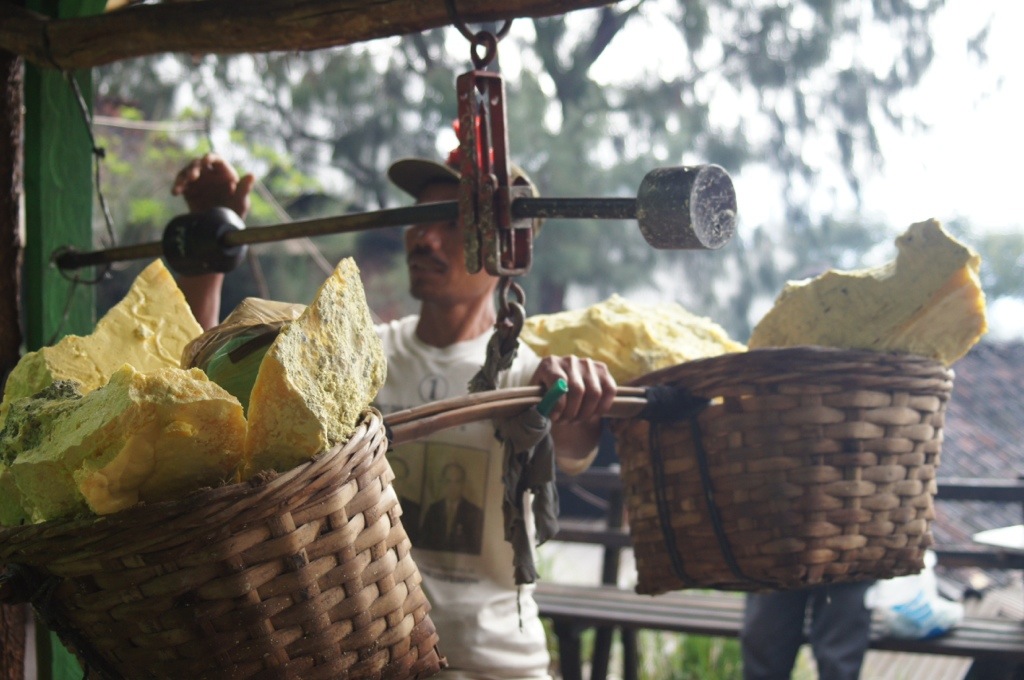
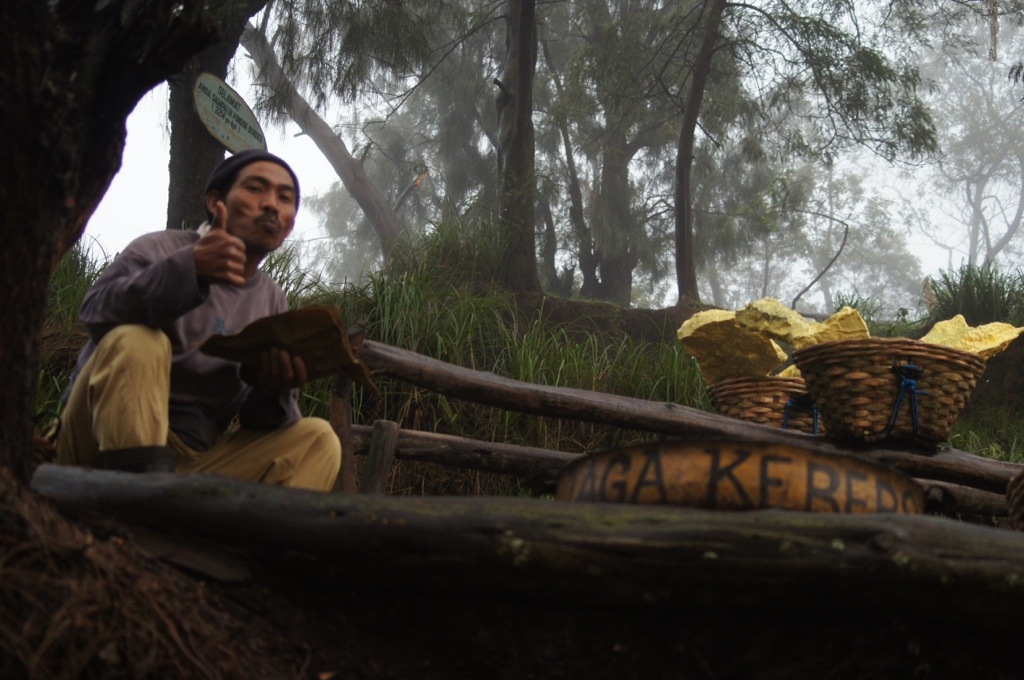
Wow, amazing! 🙂